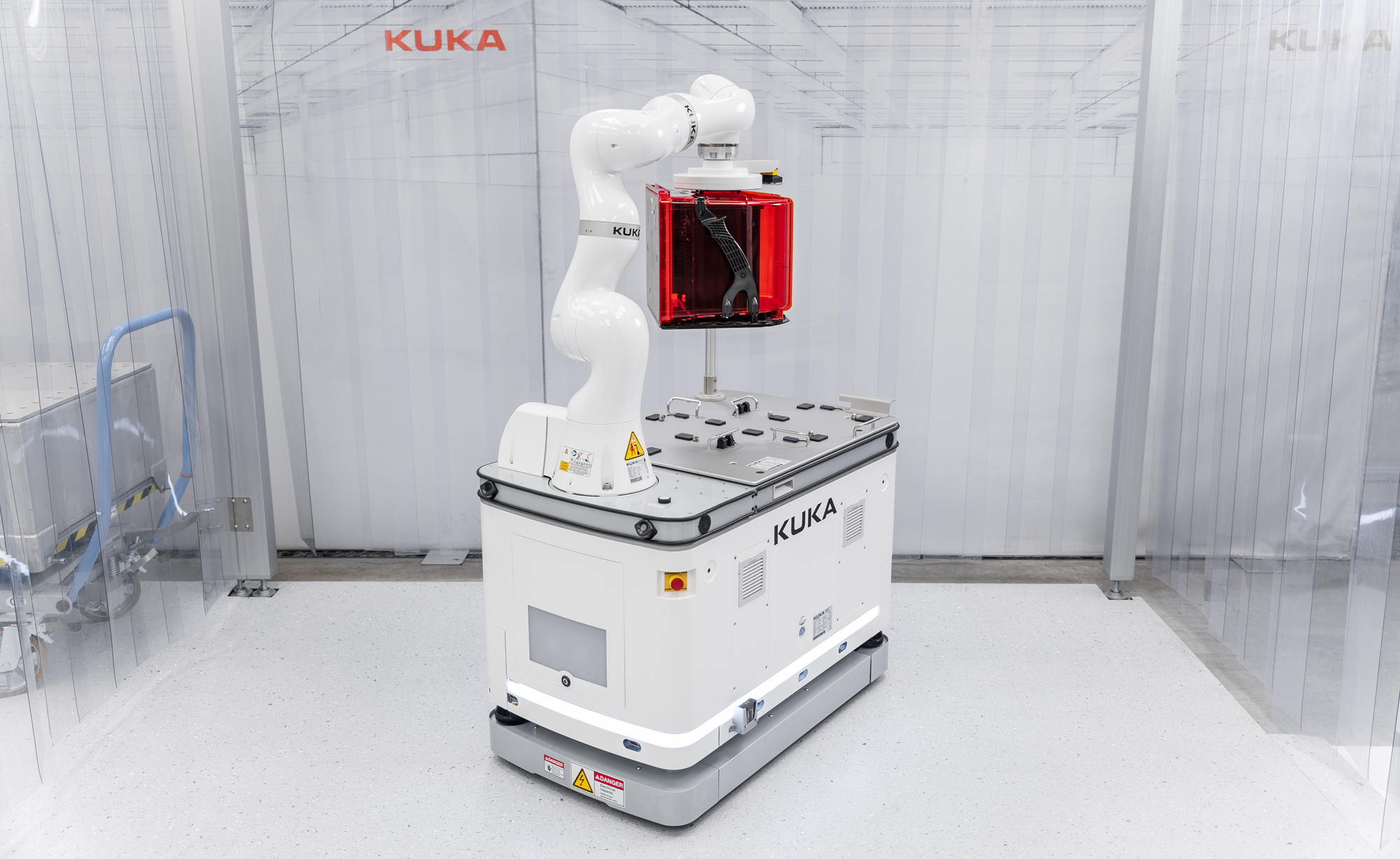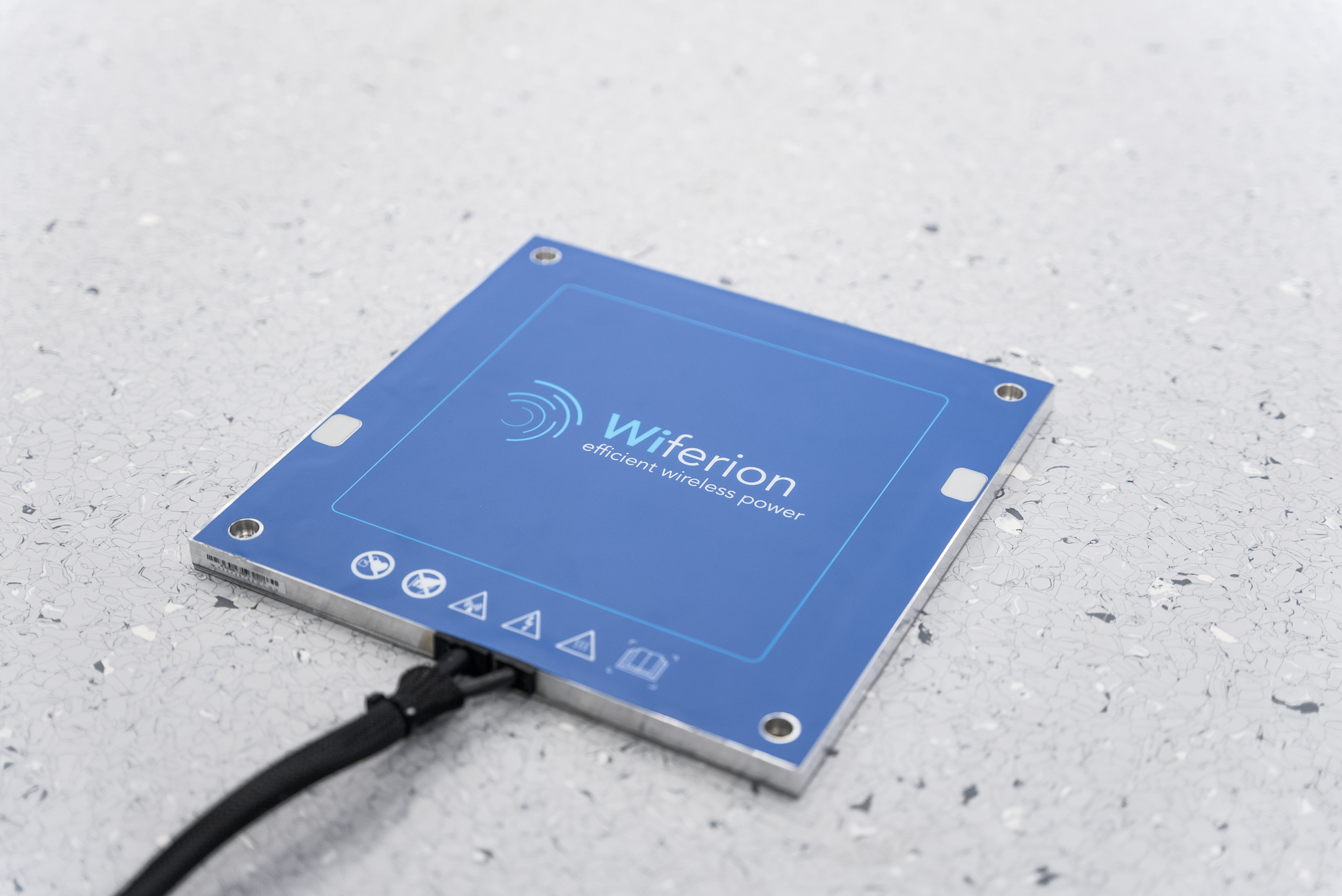The global hunger for microchips is rising at breakneck speed. To meet this high level of demand, producers must further automate their factories. With the KMR iiwa CR consisting of a collaborative KUKA robot and a mobile platform, KUKA is offering a reliable, productivity-raising automation solution for the transport of highly sensitive semi-conductor substrates (wafers). Thanks to Wiferion’s integrated charging technology, the system complies with the highest standards of cleanliness, productivity and safety.
Automation in semi-conductor manufacture
The semi-conductor industry is booming. Megatrends such as home working, the growth in artificial intelligence and the rising demand for electric cars mean that the demand for semi-conductors is continuing to rise sharply. According to management consultants McKinsey & Company, the branch grew by 20% in 2021 alone. The consultants are forecasting that the global semi-conductor industry will continue to grow by 6-8% a year and to become a billion dollar industry by 2030. In order to meet the massive demand for powerful processors, the chip manufacturers are investing in new production sites.

Wafer transport is susceptible to errors
Investment costs for a modern microchip factory can often reach several thousand million dollars. Expectations in terms of the reliability and efficiency of these smart factories are just as high.
Turning a raw wafer into a microchip can often require several thousand work stages in a laboriously secured cleanroom environment. Depending on the component, this means that it takes around three months before the wafer leaves the 24/7 production process. The transport systems and the control of the plant and processes therefore play a crucial role in the success of these mega-factories. Some stages in production are already automated very well and to a high standard of quality.

Wireless Charging for highest purity requirement
So far, one of the exceptions to this has been the transport of the semi-conductor substrates from one work station to the next. In older production plants in particular, the wafers are generally removed manually by an employee in what are known as wafer cassettes from one processing machine and taken to the next process stage in a trolley. But this process is susceptible to errors. If an employee drops a fragile wafer or accidentally places the wrong cassette into a processing machine, sums running into tens of thousands can be lost. Automation of the handling and transport processes using mobile manipulator robots reduces the risk of damage to a minimum. With the KMR iiwa CR, KUKA now has a mobile cobot for the safe handling of sensitive components like wafers in its portfolio, which also meets the highest standards of cleanliness because of its inductive charging technology.
Mobile cobot for the cleanroom
The KMR iiwa CR is a combination of a cleanroom cobot and a mobile platform. The patented gripper is specially designed for handling applications in cleanroom environments. Thanks to the innovative navigation software, the KMR iiwa CR works autonomously in the room, loads and unloads the wafer cassettes independently and takes them to the next work station, all in compliance with strict ISO 3 cleanroom classification. The mobile systems are designed to carry out their work and their mechanical movements in environments that need to be cleaner than an operating theater.
Minimum particle generation and maximum productivity
The supply of energy to the KMW iiwa CR is one of the central features for compliance with ISO class 3. “Traditional battery charging systems with sliding contacts are not suitable for a demanding cleanroom environment”, explains Jakob Brandl, Portfolio Manager Mobility at KUKA. “Copper abrasion occurs during each charging process. The particles spread around the production environment and may damage the precious wafers in extreme cases.” KUKA therefore uses Wiferion’s etaLINK 3000 inductive battery charging system. The transfer of energy is contact-free. In this way, KUKA guarantees a cleanroom charging process with the absolute minimum particle generation.
Old process very error prone in cleanroom enviroment
In addition, the charging technology allows production to be maintained without interruption for charging the battery. “We charge our cobot using ‘in-process charging’. With this, the robot drives during the pick-and-place process over a charging station and is charged in the process – without any loss of time”, explains Pascal Caprano, Head of Industry Management Concept Engineering at KUKA. The charging points can be installed in front of the processing machines, for example. The supply of energy then starts automatically when the KMR iiwa CR inserts and removes the wafer cassettes.
KUKA increases process reliability
The cobot also sets new standards in terms of safety, thanks to the inductive power transfer. While traditional contact charging plates sit a few centimeters above the floor so that the energy supply works despite a robot being clear of the floor, Wiferion’s charging plates are very flat and can be installed flush with the floor. “In this way, we can eliminate the danger of employees tripping over in the cleanroom”, says Jakob Brandl, highlighting the system’s advantages. In addition, no maintenance is required due to broken or dirty contacts. “Overall, we are thus increasing process safety throughout production.” For KUKA, efficiency was also decisive in choosing the inductive charging system.
“Our robot only has a few minutes to carry out a handling task. It is extremely important for us to be able to call on high charging currents in this short time”, says Pascal Caprano. The etaLINK system transfers power at 3 kW and up to 60 V charging voltage. “This means that Wiferion is offering us the ideal solution for an efficient 24/7 system operation.”
Summery of wireless charging in cleanrooms
The demands on an intelligent automation system in a cleanroom environment are high. With the KMR iiwa CR, KUKA is offering a reliable, productivity-raising automation solution for handling and transport processes in semi-conductor production. Wiferion’s integrated inductive charging technology increases process safety and allows 24/7 system operation. For this reason, KUKA will also be integrating the charging technology as standard with successor models.





